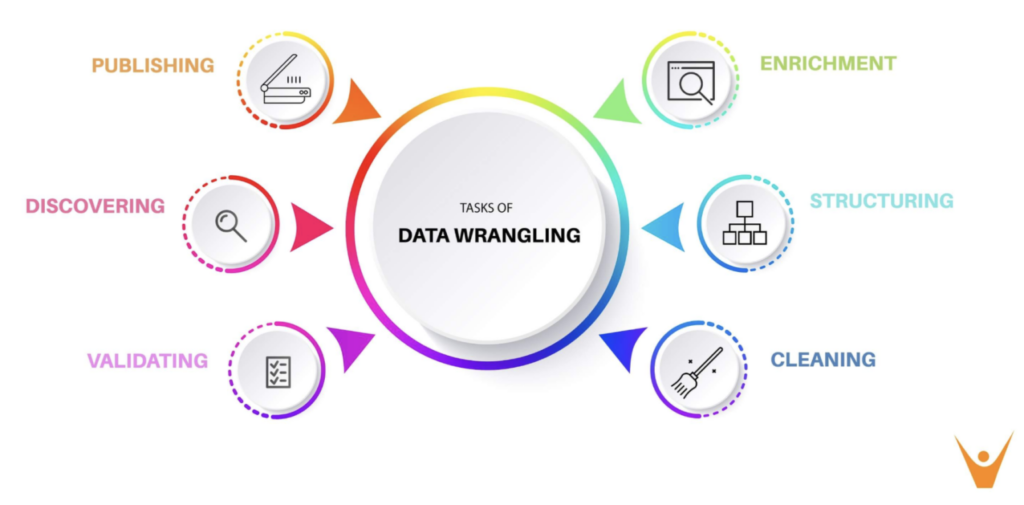“Discover the essential guide to mastering machine learning using Microsoft Azure Machine Learning Studio in this comprehensive article. Beginning with an introduction to machine learning principles, it progresses to an overview of Azure Machine Learning Studio’s capabilities. Step-by-step instructions guide readers through setting up and navigating the platform, followed by detailed coverage of data preprocessing and feature engineering techniques crucial for effective model building. The article culminates with insights into constructing and training machine learning models within the Azure environment. Ideal for beginners and intermediate users alike, this resource equips readers with practical knowledge to harness the power of Azure Machine Learning Studio effectively.”
Come explore this topic with poqzp.xyz in detail.
1. Introduction to Machine Learning
Machine learning is a transformative field that empowers computers to learn from data and make decisions without explicit programming. It underpins numerous applications, from personalized recommendations on streaming platforms to advanced medical diagnostics. Understanding its core principles is essential for leveraging tools like Microsoft Azure Machine Learning Studio effectively.
At its core, machine learning involves algorithms that learn patterns and make predictions or decisions based on data. This article serves as a foundational guide to these concepts, starting with an exploration of supervised and unsupervised learning techniques. Supervised learning teaches models to predict outcomes using labeled data, while unsupervised learning uncovers hidden patterns in unlabeled data.
Moreover, understanding key terms such as features, labels, and training data is pivotal. Features represent input variables used to predict outcomes, while labels denote the outputs models aim to predict. The quality and relevance of these features significantly influence model performance.
Additionally, the article delves into the importance of model evaluation and validation. These processes ensure that machine learning models generalize well to new data and avoid overfitting, where models memorize training data rather than learning patterns. Techniques such as cross-validation help assess model robustness.
By grasping these fundamentals, readers will be well-prepared to explore Azure Machine Learning Studio and harness its capabilities to build robust machine learning solutions effectively.
2. Overview of Microsoft Azure Machine Learning Studio
Microsoft Azure Machine Learning Studio provides a robust platform for developing, deploying, and managing machine learning models in the cloud. It simplifies the end-to-end process of building AI solutions, from data preparation to model deployment and monitoring.
At its core, Azure Machine Learning Studio offers a graphical interface that enables users to construct machine learning pipelines without needing extensive programming knowledge. This drag-and-drop functionality streamlines workflow, allowing users to connect data sources, preprocess data, select algorithms, and evaluate models seamlessly.
Key features include a rich library of pre-built algorithms for both supervised and unsupervised learning tasks, empowering users to quickly prototype and iterate on models. The platform supports Python and R scripts, facilitating advanced customization and integration of external libraries for specialized tasks.
Azure Machine Learning Studio also emphasizes collaboration and scalability. Teams can collaborate on projects, share datasets, experiments, and models, fostering a cohesive development environment. Moreover, it leverages Azure’s cloud infrastructure, enabling scalable computing power and storage capabilities as data volumes and model complexities grow.
Furthermore, the platform offers robust monitoring and management tools to track model performance over time. Users can monitor key metrics, retrain models as needed with updated data, and seamlessly deploy models as web services for real-time predictions.
Overall, Azure Machine Learning Studio is designed to empower data scientists and developers of all skill levels to harness the power of machine learning in the cloud efficiently and effectively.

3. Getting Started with Azure Machine Learning Studio
To begin using Azure Machine Learning Studio, follow these steps to set up your environment and start building machine learning solutions:
Azure Account and Subscription: Ensure you have an Azure account. If not, sign up for a free trial or a paid subscription that includes Azure services.
Access Azure Machine Learning Studio: Navigate to the Azure portal (portal.azure.com) and select “Create a resource.” Search for “Machine Learning Studio” and create a new instance.
Workspace Creation: Within Azure Machine Learning Studio, create a workspace. This workspace serves as your centralized hub for managing data, experiments, models, and deployments. Define the subscription, resource group, and region where the workspace will reside.
Explore Sample Projects and Templates: Azure Machine Learning Studio provides various sample projects and templates to help you get started quickly. Explore these resources to understand how to structure experiments, preprocess data, and build models using the platform’s capabilities.
Use Drag-and-Drop Interface: Leverage the drag-and-drop interface to create machine learning pipelines. Connect datasets, apply data preprocessing steps (such as cleaning, transforming, and scaling data), select algorithms, and configure model training and evaluation.
Run and Monitor Experiments: Execute experiments within the studio and monitor their progress. Evaluate model performance using built-in metrics and visualizations to understand how well models generalize to new data.
By following these initial steps, you’ll establish a solid foundation for utilizing Azure Machine Learning Studio to develop and deploy machine learning solutions effectively in the cloud.

4. Data Preprocessing and Feature Engineering
Data preprocessing and feature engineering are crucial steps in preparing datasets for machine learning models in Azure Machine Learning Studio:
Data Cleaning and Transformation: Begin by cleaning data to handle missing values, outliers, and inconsistencies. Azure Machine Learning Studio provides modules for tasks like imputation, outlier detection, and data normalization. Transformations such as scaling numerical features or encoding categorical variables ensure data consistency and model performance.
Feature Selection and Extraction: Identify relevant features that contribute most to model prediction using techniques like correlation analysis or feature importance ranking. Azure Machine Learning Studio offers modules for feature selection based on statistical tests, variance thresholds, or machine learning algorithms.
Feature Engineering: Enhance model performance by creating new features derived from existing data. This process might involve combining features, creating interaction terms, or extracting domain-specific features that better capture relationships in the data.
Data Splitting: Before training models, split data into training and testing sets to evaluate model performance accurately. Azure Machine Learning Studio simplifies this process with modules for random splitting or cross-validation.
By mastering these preprocessing techniques within Azure Machine Learning Studio, data scientists can optimize data quality and relevance, leading to more accurate and robust machine learning models.

5. Building and Training Machine Learning Models
Building and training machine learning models in Azure Machine Learning Studio involves several key steps to maximize model accuracy and efficiency:
Model Selection: Azure Machine Learning Studio offers a wide array of built-in algorithms suitable for various machine learning tasks, including regression, classification, clustering, and more advanced techniques like deep learning. Select the appropriate algorithm based on the problem at hand and the characteristics of your data.
Model Configuration: Configure model parameters and hyperparameters to optimize performance. Azure Machine Learning Studio provides options to customize settings such as regularization, learning rate, and batch size, ensuring models generalize well to new data.
Training and Evaluation: Utilize the drag-and-drop interface to set up experiments that train models on your datasets. Monitor training progress and evaluate model performance using metrics such as accuracy, precision, recall, and area under the curve (AUC). Azure Machine Learning Studio facilitates comparison between different models and parameter configurations to identify the best-performing solution.
Hyperparameter Tuning: Fine-tune model performance by automating hyperparameter optimization using techniques like grid search or Bayesian optimization. Azure Machine Learning Studio integrates these methods to explore parameter combinations efficiently, improving model accuracy without manual iteration.
Deployment and Monitoring: Once satisfied with a model’s performance, deploy it as a web service to Azure. Monitor deployed models for performance degradation over time and retrain them as necessary using updated data.
By following these steps, data scientists can effectively leverage Azure Machine Learning Studio to build, train, and deploy machine learning models that meet specific business needs and deliver reliable predictions.
In conclusion, mastering Microsoft Azure Machine Learning Studio empowers users to harness the full potential of machine learning in the cloud. From understanding foundational principles to practical application through data preprocessing, model building, and deployment, this article has equipped readers with essential knowledge. By leveraging Azure’s robust features for collaboration, scalability, and monitoring, users can confidently develop and deploy sophisticated machine learning solutions. Azure Machine Learning Studio stands as a versatile toolset for both beginners and experienced data scientists alike.
poqzp.xyz
